Transforming your backyard into a vibrant haven for songbirds is both enchanting and ecologically supportive. By choosing the right trees to plant, you not only provide a source of nourishment for these birds but also offer them a place to nest. What unfolds is a captivating blend of natural music and visual splendor as your outdoor space becomes a sanctuary for these feathered creatures.
To nurture this avian-friendly environment, it’s important to understand which trees are most appealing to songbirds. This piece will guide you through a selection of arboreal species that are known to be magnets for various songbirds. Furthermore, practical advice on how to cultivate these trees will be presented, ensuring that your efforts to establish a bird-friendly landscape are both successful and enjoyable.
1. Dogwood
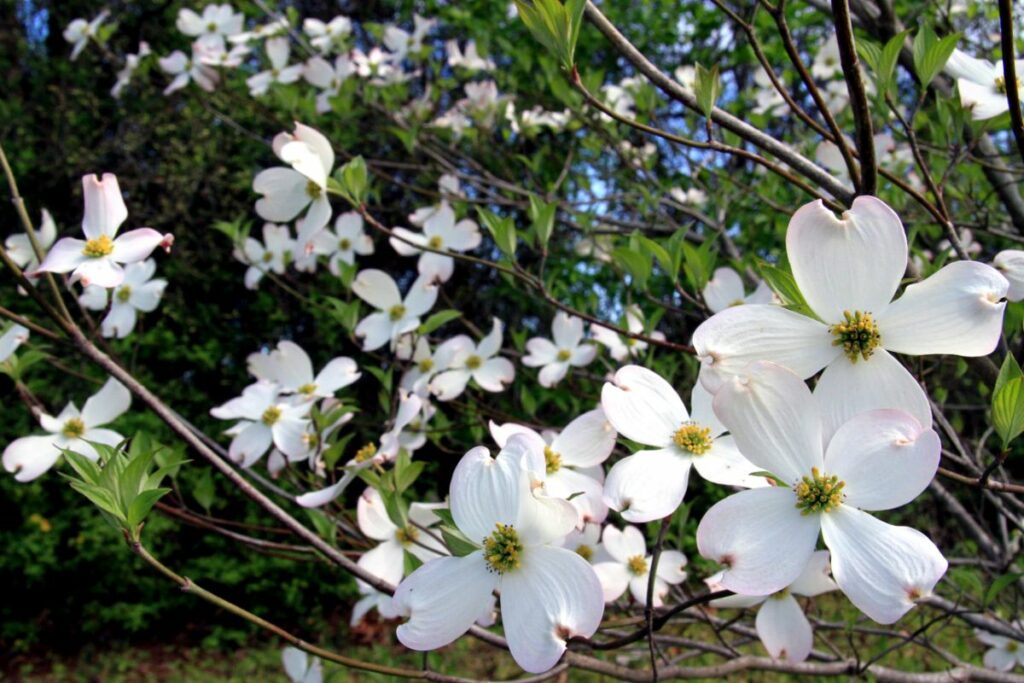
- Preferred Zones: Optimal growth in regions classified within zones 5-9.
- Appeal: Blossoms in spring providing aesthetic allure.
- Wildlife Nutriment: Bears fruit that forms clusters of berries in hues of red and white.
- Bird Attraction: To invite an array of songbirds, integrate bird feeders as supplements.
- Growth and Maintenance: Attains a moderate height; minimal upkeep required.
- Optimal Varieties: ‘Cherokee Princess,’ ‘Kousa,’ and ‘Flowering’ dogwood are top picks for avian enthusiasts.
2. Magnolia
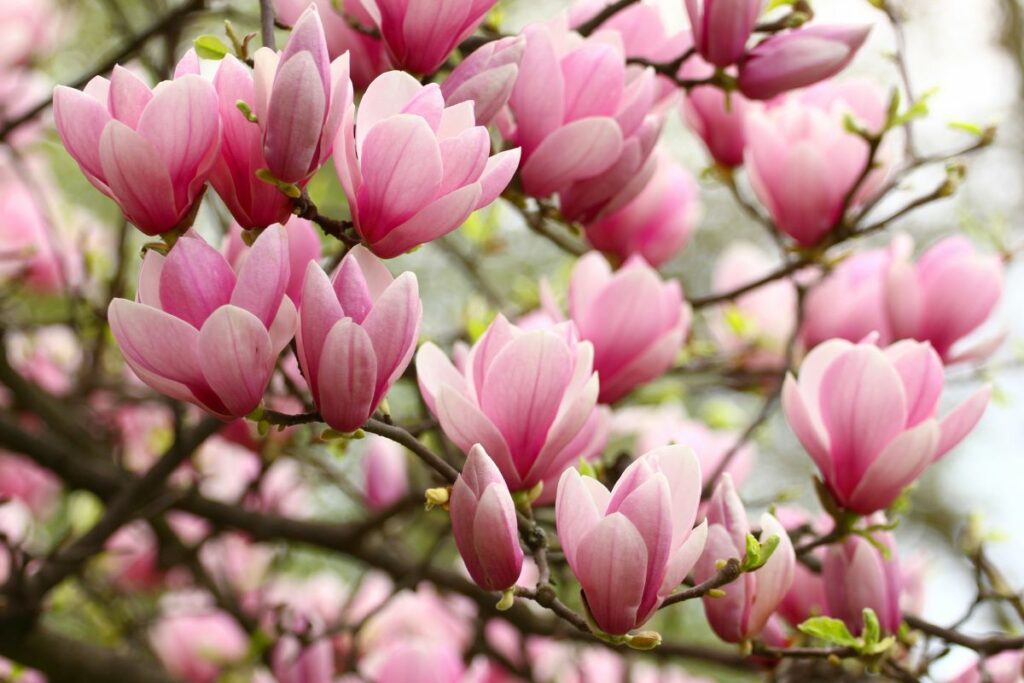
- Growth Zones: Thrives in zones 7-10.
- Water Needs: Prefers moderate hydration.
- Soil Preference: Acidic, well-drained soils suit best.
- Versatility: Suitable for container growth in smaller spaces.
Magnolia trees boast enchanting, aromatic blooms and leaves with a subtle spice, enhancing any residential landscape. Not only treasured by onlookers, but songbirds are also drawn to the nectar-rich and sweet-smelling flowers. If your garden area is compact, consider cultivating Magnolia in a container for an equally impressive display.
3. Hawthorn
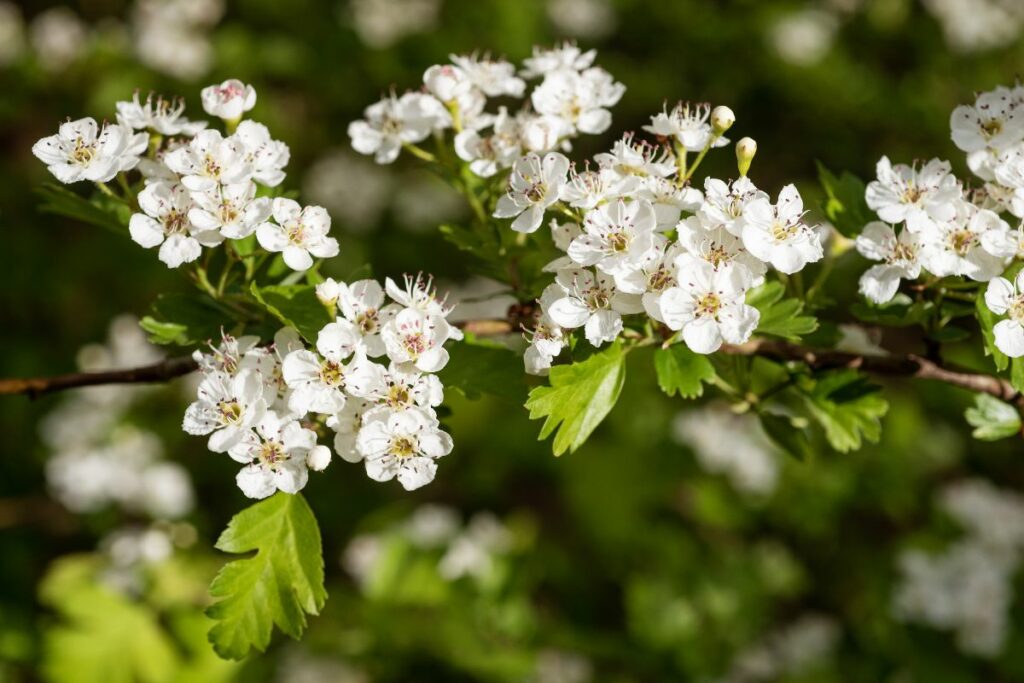
Hawthorns enrich personal outdoor spaces while supporting local wildlife. Their radiant white blossoms and crimson berries are magnets for an array of birds and useful insects.
- Bird Attraction: Species like robins and waxwings utilize the thick greenery for shelter during the warm months.
- Autumnal Display: Leaves transition to vibrant shades of yellow and orange come fall, bringing a warm palette to your garden.
- Growth Zones: Ideal in USDA zones 4-8, hawthorns require minimal maintenance.
- Planting Time: Optimal periods are early spring or autumn to allow root development before extreme weather sets in.
By adding hawthorns to your landscape, you contribute to ecological health and aesthetic appeal.
4. Northern White Oak

- Habitat: Your White Oak will attract various birds due to its dense leaves, perfect for secure nesting.
- Diet for Birds: These oaks drop acorns frequently, feeding birds like blue jays and woodpeckers.
- Privacy and Aesthetics: The sturdy trunks and wide-spread branches provide ample privacy.
- Growth: Achievable through planting seeds, which are readily available for purchase.
5. Crabapple

- Attractive Flora: Blossoms with a violet hue and lush foliage, ideal for avian nesting.
- Wildlife Haven: Seed and fruit production feeds songbirds and insects.
Nutritional Berries:
- Bluebirds
- Cardinals
- Robins
- Finches
- Grosbeaks
Gardening Tips:
- Nourishment: Weekly watering suggested.
- Soil Preference: Thrives in acidic conditions.
- Seasonal Display: Prolonged flowering period.
Feeding Tip: For bluebird allure, consider installing a nearby bluebird feeder.
6. Eastern Red Cedar
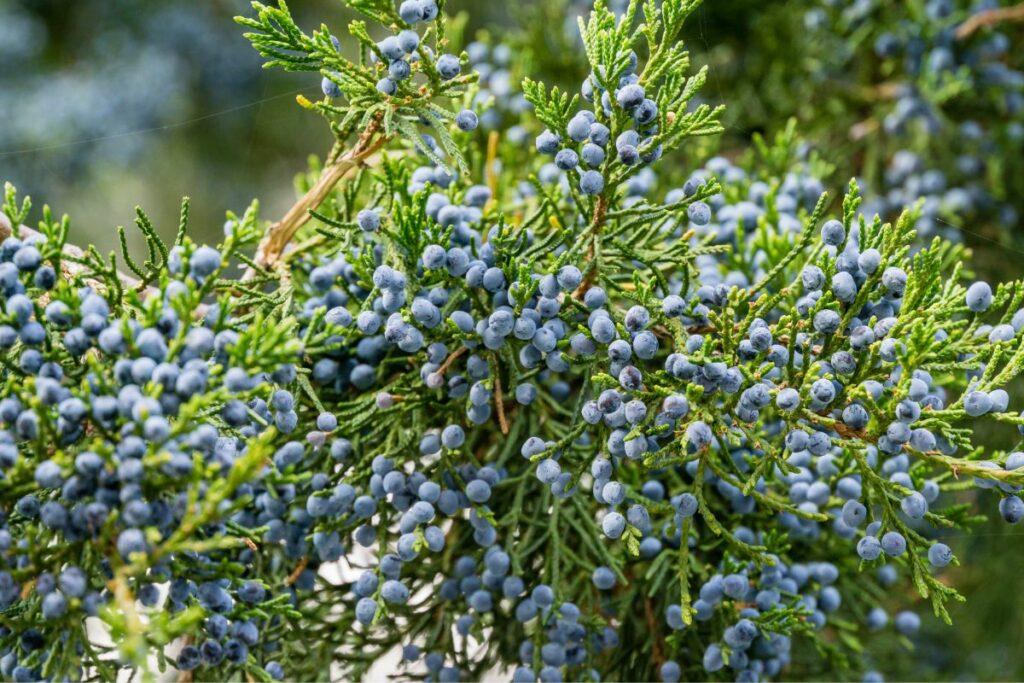
- Foliage: Everlasting vibrant green needles
- Shelter: Serves as year-round refuge for birds
- Berry Production: Yields juniper berries favored by birds
- Bird Attraction: Robins, bluebirds, cardinals, and finches feast on the berries for their nutrition and energy
- Drought Resilience: Withstands dry conditions well
- Soil Adaptability: Grows in various soil types
- Growth Zones: Flourishes in zones 2 to 9 according to USDA hardiness scale
7. Chokeberry
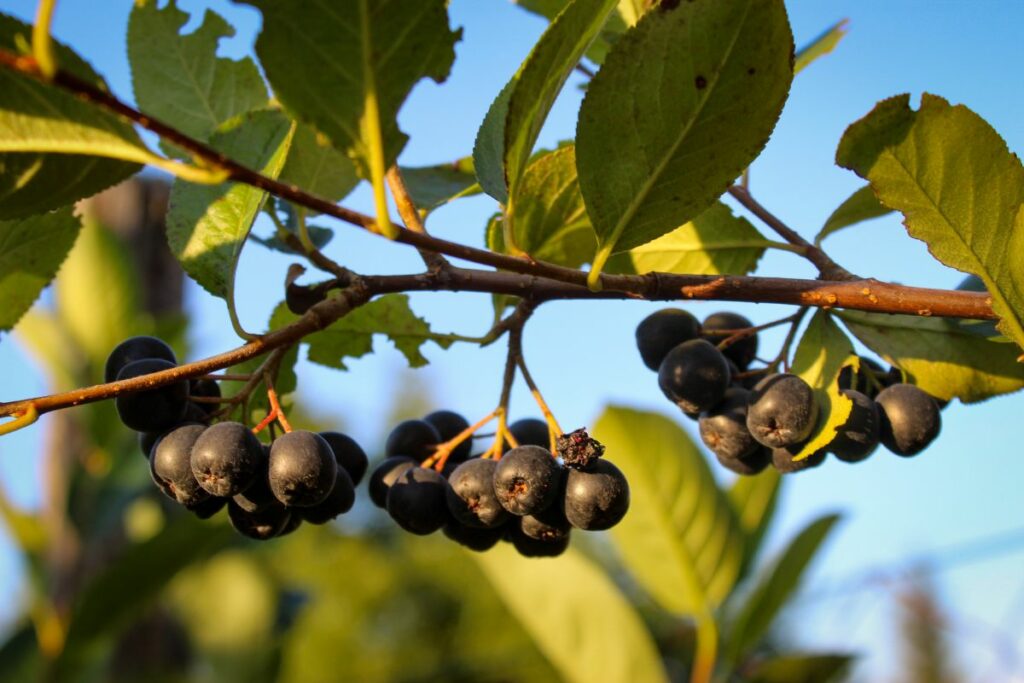
- Habitat Advantage: Planting chokeberry in your region ensures a steady supply of nourishment for local songbirds when food is sparse.
- Bird Attraction: Attracts avian species such as mockingbirds, warblers, and thrushes thanks to its edible fruit.
- Year-Round Appeal: Bears lustrous green foliage and dark-hued berries that persist into winter.
- Growth Characteristic: Offers dense coverage, which doubles as a protective habitat for birds.
Note: Chokeberry is ideal for temperate North American gardens.
8. American Holly

American Holly, termed Ilex opaca, is a perennial tree known for its rich green foliage and bright red berries that offer winter nourishment to various songbirds.
Envision your garden embellished with white snow, punctuated by these crimson berries as birds flutter about.
Bird species such as cedar waxwings, robins, and bluebirds are frequently drawn to the tree. The robust leaves and branches of the American Holly provide these birds with protection and prime nesting sites.
9. Elderberry
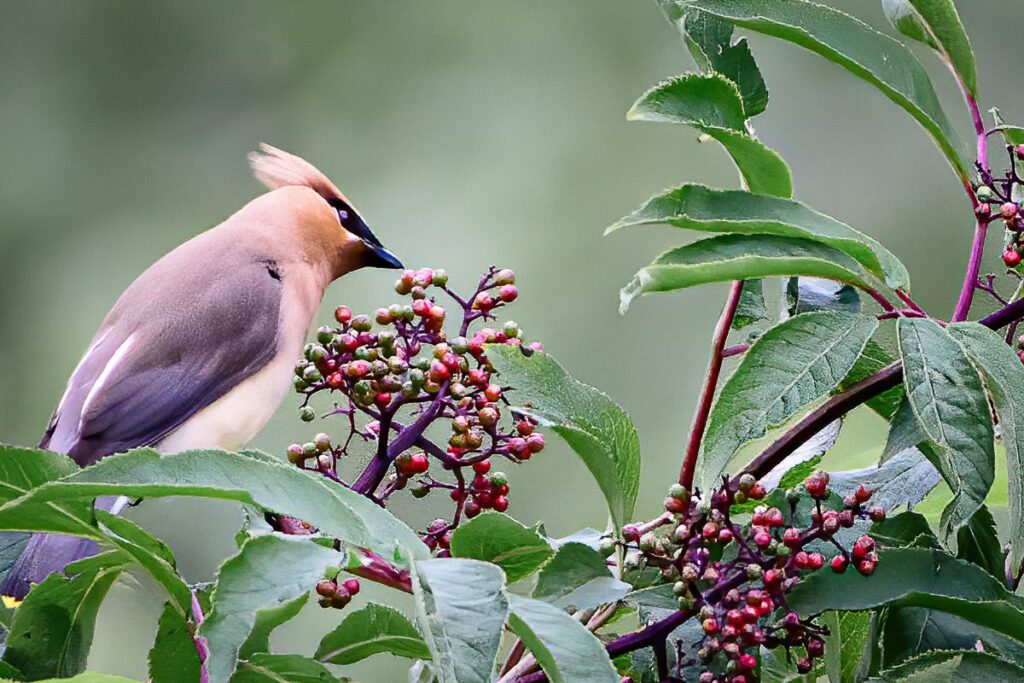
Elderberries are favored by songbirds and stand out with their charming look. In your garden, these trees flaunt groups of white blossoms every spring, succeeded by richly-hued berries in summer.
Birds, especially species such as warblers, thrushes, and orioles, are drawn to the sugary, nutrient-packed berries. The tree’s thick leaves and branches provide ideal cover for these birds.
Caring for elderberry trees is straightforward, with them flourishing best in zones 3 to 7 as classified by the USDA.

